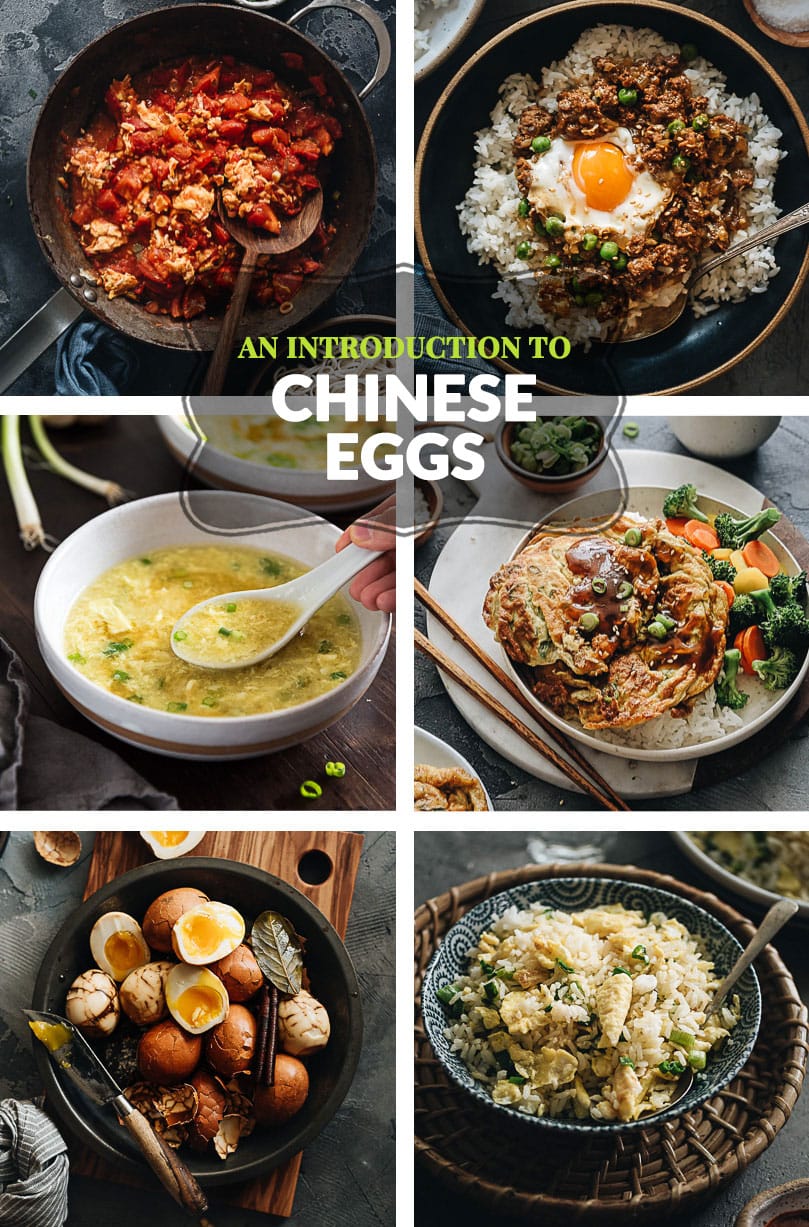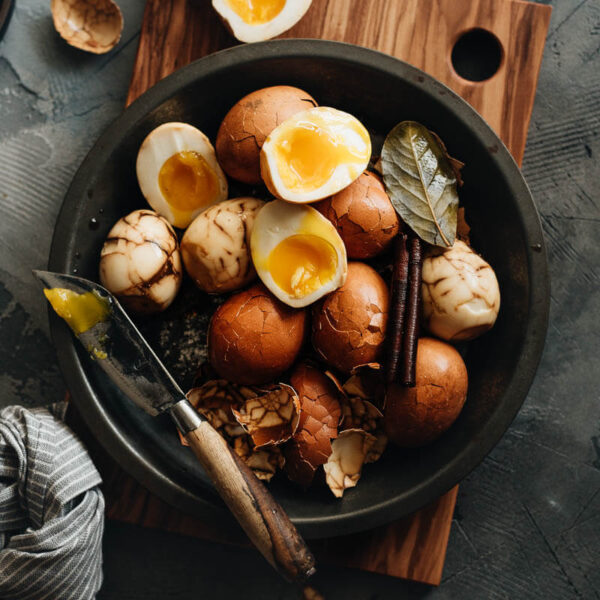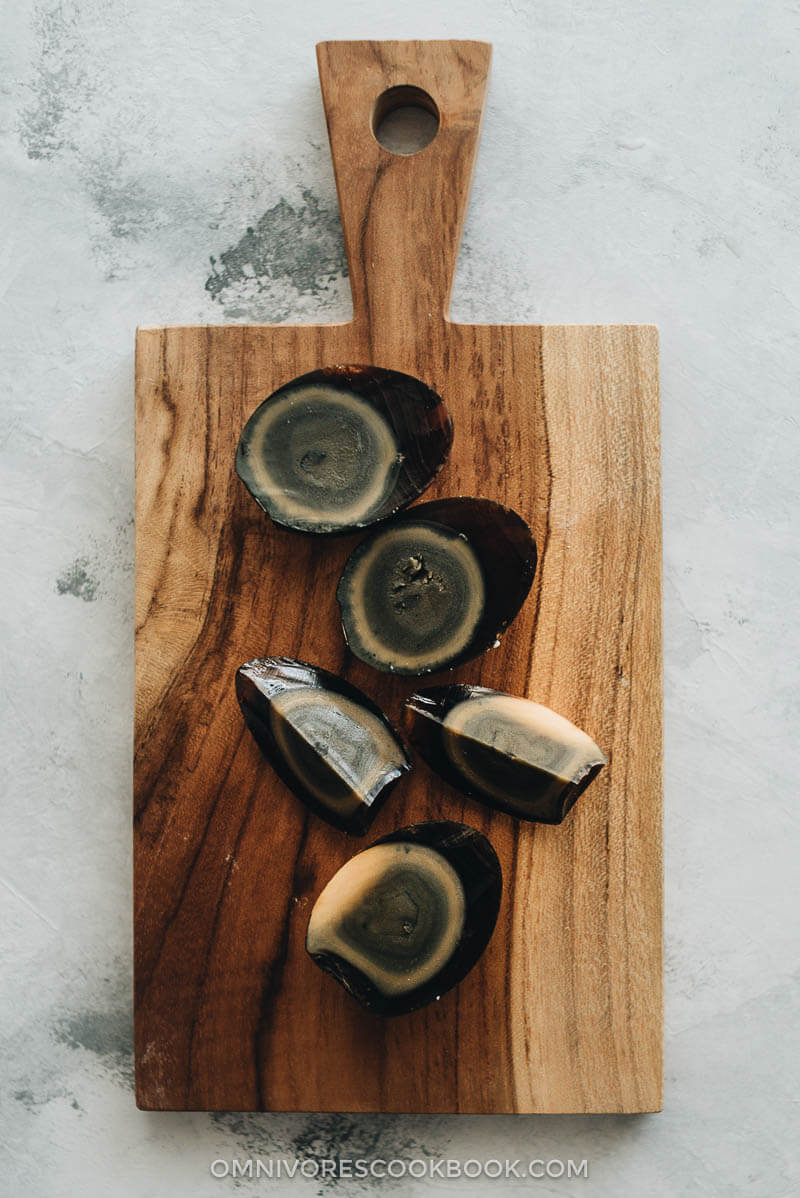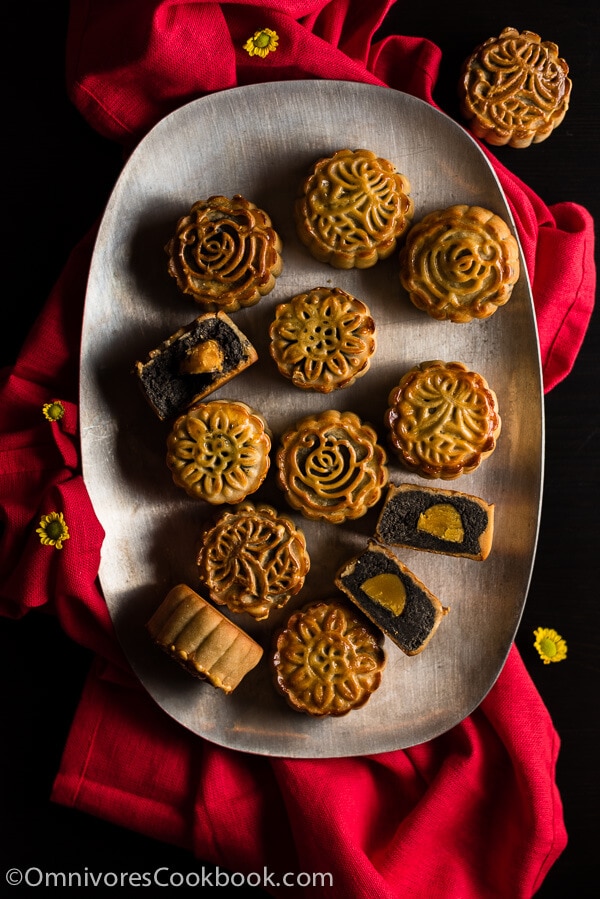Egg fried rice. Tomato and egg stir fry. Egg drop soup. These are just some of the myriad of ways eggs are used in Chinese cuisine.
Eggs (蛋, dàn) are SO intertwined with Chinese gastronomic culture. It would be hard to imagine Chinese food without them. Since time immemorial, China has been nestling eggs into dishes across the modest-to-grand spectrum.
Historically, in poorer rural areas, people lived on basic plant-based meals, with little meat available, or only for special occasions. Many peasant families would raise poultry in their back yard. So inevitably eggs were a cheap, easily-accessible and highly versatile staple that provided labourers with the protein they needed to get through long days of back-breaking work.
No wonder so many famous Chinese dishes unabashedly put eggs center stage. This humble, earthly ingredient is proudly presented at gourmet banquets, and will be quickly gobbled up if you’re not fast enough. One thing you’ll notice anywhere you go in China is the number of people who eat boiled eggs as a portable snack. Boiled, pickled, preserved, fried or stir-fried, the egg takes so many forms that it’s unsurprising it is just about everywhere you look.

Types of Chinese eggs
Firstly, ordinary chicken eggs like we consume in the West are not the only kind of egg that Chinese people eat. Although poultry is the main source for eggs, other popular species include duck, goose, and quail eggs. These days, eggs are particularly valued for their supposed protein content. They are prepared in several different innovative ways that we’ll have a look at here.
Tea Eggs
As I said, Chinese people often like to eat ordinary boiled eggs as a quick snack. But at many shops and food stands, you’ll often see eggs boiling in a dark brown broth. These are tea eggs (茶叶蛋, cháyè dàn), or marbled eggs. Already-boiled eggs have their shell cracked slightly before being re-simmered in a tea-based broth with additional spices, creating darkened lines with marble-like patterns. The flavor is arguably less plain than that of an ordinary boiled egg. It’s probably the most famous of all Chinese egg preparation methods, and you may have seen it in Asian restaurants or at Chinatowns near you.

Marinated Eggs
Similar to the tea egg is the marinated, or red-cooked egg (卤蛋, lǔ dàn). Lǔ is a way of braising various ingredients in a gravy-like broth (often pork or chicken flavored) with plenty of seasonings, such as five spice or osmanthus. Although they’re not considered particularly elegant, marinated eggs are common on ordinary people’s dining tables. They are described on the Chinese internet as “delicate, smooth, salty, palatable, chewy, mellow, inexpensive, and delicious”.
Lucky Red Eggs
Next, lucky red eggs (红鸡蛋, hóng jīdàn). Although these are not actually everywhere in China, a lot of foreigners know about red eggs. Sort of similar to Easter eggs, they symbolize birth or a new start, so it’s supposed to be a great honor to be served these scarlet-shelled ova on a special occasion, since red means prosperity and/or good fortune.
Fried Eggs
Chinese people do also enjoy a good old-fashioned fried egg (炒蛋, chǎo dàn). But unlike Westerners, they will fry the hell out of it. So while you might like a fried or boiled egg with a gooey yolk to dip bread into, Chinese restaurants usually serve well-done fried eggs that have a golden crust underside. So fried eggs, which are often used in sandwiches and on top of rice, have a well-cooked yolk that is not gooey at all. Just so you know.

Poached Eggs
An exception to this need to thoroughly cook an egg is in some Cantonese dishes, where an egg is cracked over the hot food right at the end. For example, Cantonese Ground Beef Rice and Eggs. This is known as wō dàn (窝蛋), literally “nest egg”. The process of wōing an egg involves cracking it directly into soups and other hot dishes, poaching it without breaking the yolk. Chicken eggs are normally used for this.

Century Eggs
Century eggs (皮蛋, pídàn) are another kind of unconventional way of preparing eggs that we are unaccustomed to in the West. When sold in shops, they look like furry dino-eggs, but when you break into them the egg white is translucent-green and the yolk is a deep grey. It has an overwhelmingly umami flavor and so is usually paired or cooked with other foods, like the century egg rice porridge with chicken. Learn more here.

Duck Eggs
Duck eggs (鸭蛋, yādàn), the slightly larger ones which often have a blue shell, are also widely consumed. One ultra-traditional Chinese way of eating them is after a process of preserving them by soaking them in brine or packing them in charcoal. This makes them super salty and briny like a strong cheese. Rather than being eaten whole, they might be eaten as a condiment, like the century egg. Once boiled, their texture is quite similar to hard-boiled chicken eggs, with a tougher yolk that oozes orangey oil. Sometimes, to the surprise of some Westerners at Mid-Autumn Festival, the prized yolk of a salted duck egg (咸鸭蛋, xián yādàn) can be found lurking in mooncakes.

Quail Eggs
Quails’ eggs (鹌鹑蛋, Ānchún dàn) are also peculiarly known as “the ginseng of animals”. Boiled, they are a popular chuàn (串) item: skewered on bamboo sticks and dunked into a hot spicy broth. Peeled, boiled, and canned, they are also commonly used in hot pot and dry pot. They are also fried in miniature as a popular street snack – mini quails’ egg cookers actually exist and you can buy them on Amazon.
Eggs in cooking
It would take eight lifetimes ova to list all the egg dishes in Chinese cuisine. Luckily for you (and me), Omnivore’s Cookbook has hatched up all the most well-known, traditional, egg-citing ones right here. You’ll be eggs-hilarated by all the different options. Have a CRACK at them and soon you’ll be LAYING on dinners worth SCRAMBLING for.
- Tomato and Egg Stir Fry – THE most famous of all Chinese egg dishes, full stop. If you’re looking for a more filling version, try the 15-Minute Tomato and Egg Noodles.
- Egg Fried Rice – Where would we be without egg fried rice? This version only uses THREE ingredients!
- Chinese Yellow Chive and Egg Stir Fry – Another stir-fry to add to your repertoire, lifted by delicate yellow chives.
- Tofu with Century Egg Salad – If you’re brave enough to experiment with the century egg, there’s also this Century Egg Congee with Chicken.
- Egg Drop Soup – It’s like a silky soup version of scrambled eggs.
- Cantonese Ground Beef and Eggs Over Rice – This uses the poaching method to create a southern Chinese counterpart to the shakshuka.
- Egg Foo Young – A fragrant Chinese-style green onion omelette. You can also make a shrimp version.
- Tea Eggs – Learn to make your own quick Chinese snack here!
- Instant Pot Boiled Eggs – Finally, if you have an instant pot, you can learn how to yield both hard and soft boiled eggs with this guide.
[one_fifth]
[/one_fifth]
[four_fifth_last]
Meet Sally
Sally Jensen tried pretty much every weird food during her three years in China before it all got too much and she went vegan. Now she spends her time worrying about the planet here and sporadically tweeting here. All views her own.[/four_fifth_last]












